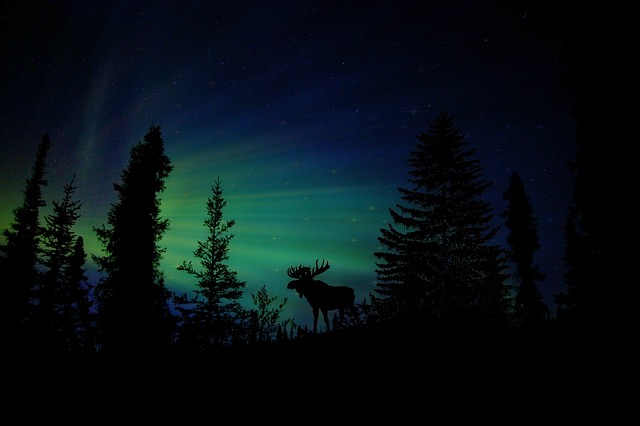12 Moose Spotted During UW Biodiversity Institute’s Winter Moose Day
For the ninth year in a row, community scientists were able to glimpse moose and collect data about their populations in two mountain ranges outside of Laramie for Winter Moose Day.
Ninety-one surveyors, traveling by snowshoes or skis, trekked 22 routes in the Snowy Range and Pole Mountain areas during the Feb. 11 event, which was coordinated, in part, by the University of Wyoming’s Biodiversity Institute.
Volunteers looked for moose or signs of moose. These can include tracks/hoofprints in snow, bed areas, scat droppings and browse on aspen and willows.
“Twelve moose were seen. Only one of those was a calf,” says Mason Lee, senior project coordinator of the Biodiversity Institute. “We did not have volunteers record each time they saw tracks or scat. Rather, they just recorded if they had seen any since their last observation and if they thought it (scat or tracks) looked like it was from a large ungulate or something else.”

Lee adds that some of the routes were surveyed by more than one group — a practice that was first used during the 2022 Summer Moose Day. Each year, surveyors are typically a mix of some volunteers who participate each year as well as newcomers.
Volunteers collected what Lee refers to as “distance sampling data.” The data include how far volunteers were from the animal they spotted and what was their orientation versus the animal’s orientation.
“The entire Moose Day protocol was much more in depth than in previous years,” Lee says. “We asked surveyors to stop every 20 minutes to record what they saw at that spot, in addition to stopping to record data at the start of the survey, the end of the survey and whenever they saw an animal.”
Lee says the community scientists also collected information about snow-ground coverage and light conditions at each point they stopped; recorded whether they were traveling on skis or snowshoes; whether they saw dogs on the trails; whether they were moving or stopped when they saw a moose; and how confident they were in their animal counts.
“All of this data will help build a better picture of the detectability of moose, which will lead to more accurate population estimates in the long term,” Lee says.
The data gathered from Winter Moose Day were shared with biologists at UW. These biologists use the data collected by community scientists to further their understanding of the population densities of local moose, their reproductive rates, their winter ranges and how these variables change over time.
While the number of moose spotted — 12 — was less than last year’s record sighting of 19 moose — 15 adults and four calves — that does not necessarily mean the moose population is dwindling in those areas, Lee says.
“The data we get each Moose Day tell us what was seen on that day,” Lee says. “It’s the long-term trend data that we are now collecting that will help clue in to changes in the population.”
More will be learned after Dave Christianson, an associate professor in the UW Department of Ecosystem Science and Management, and his graduate students analyze the Moose Day data as well as external factors that can affect moose counts, Lee says.

Both the winter and summer Moose Day events are geared toward increasing the public’s understanding of moose in the Laramie area and involving the public in asking and answering questions. These events are an extension of the original program, Moose Day, held by Nature Mapping Jackson Hole (NMJH) in Jackson each winter. NMJH is a citizen science program created by the Jackson Hole Wildlife Foundation.The UW Biodiversity Institute fosters conservation of biodiversity through scientific discovery, creative dissemination, education and public engagement. In this setting, scientists, citizens, students and educators come together to share a wealth of perspectives on the study and appreciation of biodiversity — from microbes to poetry and ecosystems to economics. Learn more at www.wyomingbiodiversity.org.

